Computer games I've enjoyed
Over the years I've played a good amount of different video games. Here's a list of games I've enjoyed in particular. Some of them are singular games, others are entire series. Just about all of these are PC games unless stated otherwise.
Diablo I
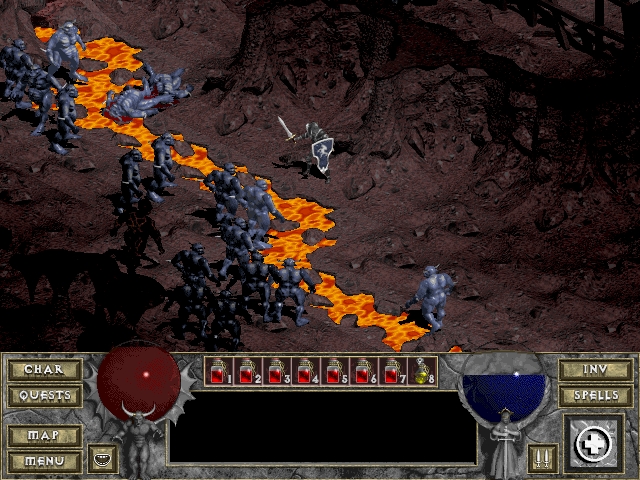
I've only listed the first one here, because it's easily the one I enjoyed the most. I remember first playing the demo when I was about 5 years old. It was such a thrill to be playing such a graphic, evil-looking game, especially considering it was rated MA15+ here in Australia. The graphics have dated fairly well, and still provide an amazing creepy atmosphere to this day, something the later games in the series seem to have lost a bit.
Probably what sticks with me the most about this game is the soundtrack. Matt Uelmen created one of the most immersive and unsettling soundtracks to any game ever made, and although he went on to create amazing soundtracks for Starcraft, Diablo II and World of Warcraft, the music in the first Diablo game holds a special place in my heart. The guitar in the Town song that plays when you're in Tristram suits the mood perfectly - a temporary respite from the horrors in the dungeon, yet a palpable sense of danger and wariness of evil. The dungeon music starts off relatively simple, starting off with heavy marching drums, tolling bells and plenty of other foreboding sounds, some recognisable, some not. As the player delves further down into the catacombs, the music becomes more and more ambient: howling winds, bleats from humanoid creatures, the heavy drums give way to unrecognisable instruments...horns of some kind? The last area in the game, Hell, is a mad mix of demonic choirs, twisted circus music, static and heavily distorted guitar. Absolutely some of the best music you'll hear in any game ever.
Gameplay-wise, it's a little bit broken. The optimal strategy is to keep going until your inventory fills up, and then make a portal back to town to sell it all. Gold takes up inventory space in this game, with 1 slot able to hold up to 5000 gold. This is not nearly enough, however, and since there's no personal stash you end up just throwing it on the floor in town. Multiplayer is enjoyable, though playing with someone else arguably ruins the atmosphere a little bit. One fun variant is the Ironman mode, which I've only played once and would like to play again.
Quake III Arena/Unreal Tournament
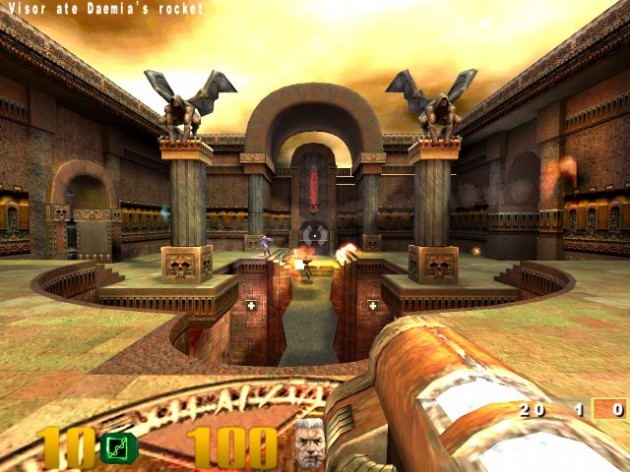
I've grouped these games together as they are essentially the epitome of FPS deathmatch, and they both came out at around the same time. Comparisons are unavoidable!
Both games implemented classic fast-paced FPS multiplayer games. Deathmatch was the main mode: you spawned on a level with a bunch of other players, picked up weapons and shot them at each other. The player with the most "frags" won. You could also play it on teams, or you could play the Capture the Flag mode, where you needed to grab the other team's flag from deep within their base and bring it back to your base to earn points.
Unreal Tournament was arguably the more expansive of the two games. Each weapon contained two modes of firing, and there were plenty of interesting weapons, such as the biogun that spewed explosive green sludge everywhere. There were also a few more game modes, such as Domination and Assault, that mixed things up a bit. However, Quake 3 was the simpler game, and was a bit more fast-paced. The game engine was open-sourced, so people were able to get it running on anything. There is still an annual convention dedicated to the game.
I first got into Unreal Tournament, and then later into Quake III, as the latter still has continued popularity, being kept alive by Quake Live. I was pretty hooked by the fast-paced tactical gameplay, and it's still thrilling to this day. Technically the same gameplay has been implemented by countless FPS games afterwards, but there's something about the fast-paced simplicity of Quake 3 that keeps me coming back.
Counter-Strike

Ahhh Counter-Strike, possibly the only thing I've ever been truly addicted to. I still remember when I first played it at a LAN cafe with an old high-school friend. It was different to the other multiplayer FPS games I'd played - it was far easier to die, and bullets slowed your speed down, so there was a huge focus on being stealthy and keeping yourself alive. The teamplay within the game was crucial. You needed to rely on your teammates to stay conscious of where the enemy was, and if you died, you wouldn't respawn until the next round. Weapons were straight-shot guns, differing in accuracy, reload times, output speed, magazine sizes, speed enumbance, damage and aiming scopes. Grenades of different types allowed for tactical manouvres. Someone sitting down a crucial corridor with a sniper rifle? Throw a smoke grenade in front of him, blocking his view and reducing his effectiveness. Or throw a flashbang in his line of sight. Or, now that you know the sniper's focused down the corridor, your teammate is safe to come out from his spot near him and shoot him in the head, or knife him, gaining extra money for the next round. Compared to Quake or Unreal Tournament, it felt so deep!.
I also loved how it started off as a mod of Half-Life. It was essentially a more accessible way for people to make games (albeit with the obvious limitations of being an FPS), and basically formed an evolutionary ecosystem of game ideas, with the most interesting and successful ones naturally shared and played. I'd love to see more of this "crowdsourcing" of game ideas.
Years later and I still play and enjoy this game, albeit in its latest incarnation (Global Offensive). There's something about its round-based gameplay that keeps me coming back and playing just one more round. It's gotten so bad that I recently had to uninstall the game to stop myself from wasting time on it! Strangely, I never play any sort of ranked/competitive mode, just casual. Still, this is one of the finest game series I've ever played, with a perfect combination of strategy, skill and fun.
Half-Life

Half-Life is a game that has been lauded mostly for its single-player campaign. However, I loved it for its multiplayer - I couldn't even finish the single-player mode out of boredom.
You'd think that between Quake, Unreal Tournament and Counter-Strike that I'd have enough FPS games to keep me going? What could yet another multiplayer FPS game offer that the others didn't have? Whilst UT and Quake had fast-paced, frantic, tactical manouvring, and Counter-Strike had team-based stealth and tactics, Half-Life's 1-on-1 gameplay had an element of fear and stealth as you tried to outsmart your opponent, laying traps and triggering environmental hazards to try and gain an edge. Although still technically deathmatch, Half-Life's take on it was much slower and more tense than its faster counterparts.
I have fond memories of playing this with my brother in our house, with one computer upstairs and the other downstairs. There was no music in the game, and elements such as footsteps, item spawns and other elements were amplified. You were constantly listening for audible clues of your opponent. Furthermore, you could plant wall-lasers or remote-bombs as traps, or trigger a nuke, causing your opponent to dash for the bunker, where you would be waiting with a sniper-rifle. The pacing was intense. You could be sneaking around each other, trying to get the jump on your opponent, when suddenly they appear around the corner and you're simultaneously spraying whatever weapon you happen to be holding whilst trying to run behind cover again. There were enormous amounts of fun to be had with this game.
As an aside, we played the game so much that we started creating alternate game modes for it. We discovered that the game-engine allowed you to plant wall-lasers on top of other wall-lasers, so long as the lasers themselves weren't obstructed. You could create a tower of lasers this way. By taking it in turns to place a laser, you could play a sort of "laser jenga", where whoever makes it explode loses. Makes for an excellent drinking game!
Worms Armageddon

My first foray into the Worms series was a demo of Worms 2 included with an issue of PC User magazine. The demo only offered a single map, with two teams of two worms each, and a restricted set of weapons. My brother and I played it over and over again, creating new game modes ourselves and exploring the possiblities of the engine within this restricted demo. Being young kids we were lucky enough to get given Worms Armageddon as a Christmas present, which we played incessantly amongst ourselves and with extended family and friends.
Worms' gameplay is one-of-a-kind. Simple, yet deep. Silly, yet compelling. Satisfying when you win, but entertaining even when you lose. It's a game that appeals to everybody on some level. Each player gets a team of worms on a 2d-field, and each player takes a timed turn to control one of their worms, moving it into an ideal position and firing a weapon. There's a huge range of weapons to choose from, from standard grenades to ridiculous weapons like the Old Woman, or the Super Sheep. Your aim is to eliminate all the other players and be the last team standing. Controls are fairly simple, and being turn-based, new players can be helped by their experienced opponents on their turn. Most turns are a spectacle of explosions and physics: worms flying off and hitting other worms, napalm causing a barrel to explode, creating more napalm that hits a worm, causing him to jump and trigger a mine, causing yet another explosion. Each team of worms could also be assigned a voice-pack, giving character to them and adding a cartoony aspect as they curse each other and the player.
As you explore the game system, you discover that the game is deeper than it seems at first. You learn never to bunch your worms together, lest a single explosion damage both of them. It's easier to pick off an enemy worm by launching them into the water. The ninja-rope takes skill to traverse the map, and learning how to fire weapons whilst roping around the map is crucial for saving precious turn-time. Sheep can pick up weapon crates. Napalm strikes are affected by wind. There is plenty to learn in this game.
My enjoyment of this game is twofold. I played it non-competitively with friends and family, enjoying the ridiculousness of it and not taking it too seriously. I also played it online. Being turn-based, I played with people all over the world. I played this semi-competitively, only playing in a particular game-mode called "Shopper". You started off with infinite ninja-rope and parachute, and each turn a weapon-crate spawned with which you could attack your opponents. There were a few rules that weren't implemented by the game system: you couldn't attack the player coming last on his own, and you had to pick up a crate before you attacked, even if you had a weapon from an earlier turn. The game-mode was typically only played on special "shopper" maps, which had ceilings for ninja-rope holds, safe nooks and crannies to prevent people from "knocking" you off perches, and indestructable terrain. Whilst it demanded skill to play effectively, it required a bit of luck to actually win, and since attacking the losing player was not allowed it was difficult to play an effective strategy. Still, it was a lot of fun and it took up a lot of my time for a while.
Worms still survives to this day, with multiple sequels. Armageddon's immediate sequel, Worms World Party, added a few new modes, but somehow didn't seem as good. They released a 3D version, Worms 3D, but this was not nearly as accessible or fun as the original. Since then they've released multiple sequels, most of which I haven't played, and the ones I have played just didn't feel as fun. Worms Armageddon still holds up to this day, with 2d-graphics that have aged well, and numerous patches to ensure compatibility with modern systems.
Wonder Boy III: The Dragon's Trap and Wonder Boy in Monster World (SMS/Mega Drive)
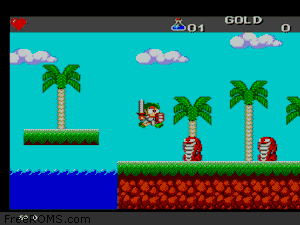
I had a Sega Master System when I was younger, and although I was jealous of people with a NES/SNES, the SMS had some pretty good games. One of these was Wonder Boy III: The Dragon's Trap, a side-scrolling platformer with light RPG and exploration elements, similar to Zelda or Metroid. The game had awesome elements of exploration, clever puzzles and colourful environments full of personality. You played as "Wonder Boy", and the game starts at the end of one of the previous games, travelling into Mecha Dragon's lair to slay him. When you do, you become cursed and turned into a fire-breathing lizard, with all your equipment lost. The rest of the game involves you exploring the land to ultimately find the Salamander Cross to turn yourself into a human again. Along the way, you defeat different dragons, each one turning you into a different animal with different strengths and weaknesses. The different abilities let you gain access to different areas of the game world.
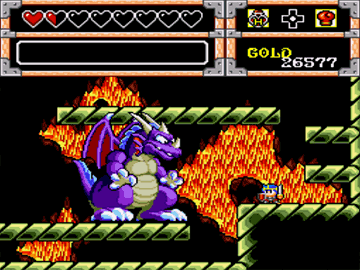
As a kid, I also had a copy of Wonder Boy in Monster World on the Sega Master System. Whilst I enjoyed the game, it was a scaled-down 8-bit version of the mega drive version, which I played much later on an emulator. This sequel of sorts retained the colourful playful feel of the previous game, as well as the light RPG-ish platformer mechanics. Although you remain human in the game, you obtain more abilities by equipping different items.
Both games gave such a fun sense of exploration like I've never experienced in any other game. The music was also pretty incredible, especially for their time. I still play both games every now and then.
There were other games in the series. The original Wonder Boy was pretty fun, and I played it a fair bit as a kid, but it was relatively linear and quite punishing. Also, it had a completely different caveman theme. Wonder Boy in Monster Land was a step up, introducing the sword-and-sorcery theme and RPG elements. It was also originally an arcade game, so it was fairly linear. Confusingly, there was another game in the Wonder Boy series called Wonder Boy III, though this one had the subtitle Monster Lair. This was also an arcade game, though it had a completely different shoot-em-up style. The last game in the series, Monster World IV, was quite similar in gameplay to Monster World, and featured a female protagonist. This was originally only released in Japan, though eventually was rereleased on modern systems. I actually quite enjoyed this game, though I never finished it.
Sonic the Hedgehog
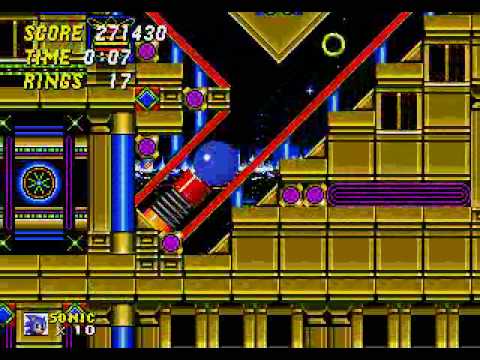
As mentioned previously, I grew up with a Sega Master System, and although I secretly wished I'd gotten a NES or SNES instead, there were plenty of games unique to the SMS I would never have grown to love otherwise. Amongst these of course was Sonic the Hedgehog.
Sonic was just about the coolest thing ever when I was a kid. His slick blue hair/spiney things, his cheeky smirk at the end of every level, and the way he ran so goddamn fast! And the games felt so fun to play! If you hit a particular spring you'd go flying from one end of the level to the other, and even though the levels were designed to make you feel like you were the one making him move so fast, whilst all you were doing was pressing the right directional button, you still felt awesome. And the music was some of the catchiest and grooviest video-game music out there. Sonic was the original "move fast and feel awesome" game, followed later for me by Wip3out and Burnout 3.
I felt like there were multiple games in the series that appealed to me, and it feels unanimous that the later games in the series just weren't nearly as good, but a standout is Sonic the Hedgehog 2 for Sega Master System. I'm obviously biased since I owned this game as a kid, but whilst the first Sonic game on the SMS was a scaled down port of the megadrive version, the second game was a completely different and original game to its counterpart on the megadrive. Whilst there were limitations on the 8-bit system, it really tested the capabilities of that system with slick gameplay and amazing colourful levels. And the music was absolutely amazing. I maintain that the music for Scrambled Egg Zone is some of the most frantic and amazing 8-bit music you'll ever hear.
Another standout was Sonic the Hedgehog 3, which we had a demo for on the computer that we played continuously. This game for me was the epitome of the series - beautiful levels and amazing music that was rumoured to have been partially created by Michael Jackson. The megadrive version of Sonic the Hedgehog 2 was also great. I actually had the music to Chemical Plant Zone as my ringtone for a while. Sonic Advance was arguably the last good 2d Sonic game that I played, though apparently its sequels weren't too bad either.
Super Mario Bros.
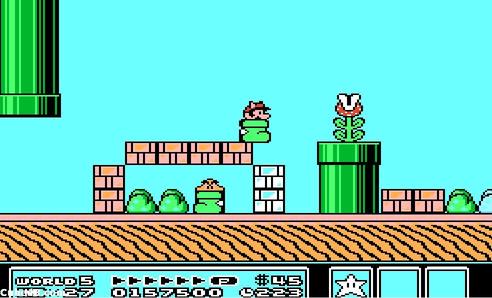
What can I say about this series that hasn't already been talked about at length? The Super Mario Bros. series consistently sets the standard for platforming games, both 2-dimensional and 3-dimensional (though I personally only played the 2-dimensional games). Its simple and intuitive controls and environments are irresistable, and the music catchy as all hell.
Whilst just about all the Mario games are exceptional, there are a few that stand out for me personally. I never owned a nintendo system except for the original Game Boy and later the Game Boy Advance. The two Mario games on the former platform, Super Mario Land and Super Mario Land 2 were great games, especially considering the limitations of the platform, and I played them both to death. The original Super Mario Bros. was of course a classic, and I also played it to death when I got the re-release for Game Boy Color. Super Mario Bros. 3, however, was for me the epitome of the series. I never actually owned a copy until the Game Boy Advance re-release, but it was always THE game to play when I was over at someone's house. The sound, music and gameplay just ooze the primal essence of Mario platforming. It's in every way, shape and form a masterpiece. The sequel, Super Mario World, was also very good, but strayed just a little bit too much from the bare essentials for me. The second game in the series was way too different for me to fully enjoy.
Nethack
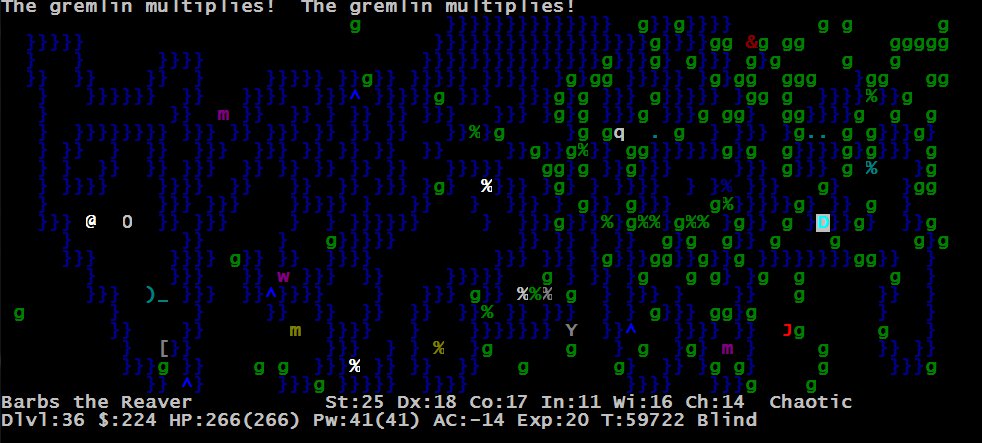
Much like the amount of features in the game itself, there are almost too many good things once can say about this game. Nethack is one of the original classic roguelikes. You pick a character and traverse your way through a randomly created dungeon, trying desperately not to die, lest you restart the game all over again. Gameplay is turn-based, giving you as much time as you need to plan your next move. The interface is sparse, yet informative enough for you to understand what's going on.
What makes Nethack unique is the sheer amount of STUFF in the game. Nethack has been in semi-active development since 1987 (as of writing the first new version in 10 years has just been released) and is completely open-source. The result is a game with a giant pool of creatures, items, features and spells from dozens of areas of science-fiction, fantasy and pop culture, of which you'll only see a particular amount each game. Looking through the code or the wiki gives you a sense of just how much depth there is in this game. If you expect a combination of items or events to provide some sort of outcome, chances are someone's coded that in the game somewhere.
Nethack is as much a game as it is a simulation of fantastic variables. Entertainment is derived not only from how long you can survive, but from what crazy stuff actually happens in the game. It's incredibly compelling and I've not played another game like it, not previously and not since. I've beaten the game only once, and have written up a much more detailed article about it, which I plan to post to this website.
This punishing form of permadeath inspired many other games, and spurred a renaiassance of sorts recently within the indie gaming community, commonly called "Rogue-Lites". Some of these are better than others, but they generally have that common thread of making the most of what the game throws at you, and generating unique and satisfying problems to to solve. One of those games that particularly piqued my interest is...
FTL: Faster Than Light
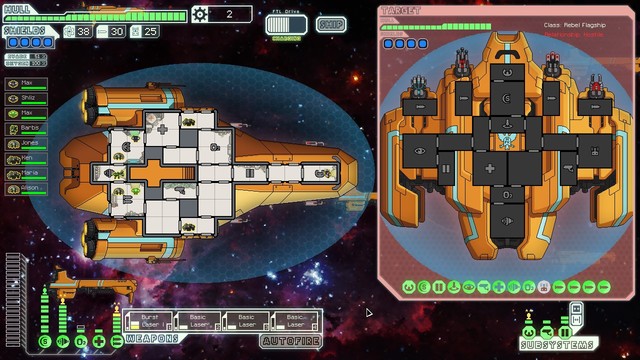
This is the most recent game on this list, and already it's cemented itself as a true classic. It takes the procedurally-generated, permadeath style of gameplay so loved in Roguelikes, and intelligently creates a game-system that simultaneously gives you time to make interesting decisions whilst recreating the thrill of taking charge of a spacecraft. The interface is superb, and the graphics simple but beautiful and created with a unique charm that I'd love to see recreated in other games (it's not quite pixel-art, but it's not super-detailed either). The gameplay itself is very challenging, but like the best roguelikes, it generates interesting problems and forces you to make interesting decisions, which yield a very rewarding payoff. When you've made it to the final sector, you've got a ship that's been upgraded and fitted with weapons and augmentations that you've chosen. Battles require micromanagement, but this is neither taxing nor tedious, owing to the "Sims"-style real-time gameplay allowing you to pause and assign crew to stations, or divert energy to particular systems.
Although the interface is largely geared towards creating a flawless gameplay experience, there is a strong sense of atmosphere in the game, conveyed largely by the art-style and the music. Each sector has a race associated with it, and each race has a theme, which itself has an "explore" and a "battle" version that fade into each other when you're entering or leaving a battle.
I'll never forget ending a tougher-than-expected battle in the slug sector, which left me with all my crew dead except for one, and my hull damaged down to 3HP. The music was barely there - just ambient blips and sounds, my ship hanging there in space, my lone pilot wondering how he could keep going, or if he could make it. That music just perfectly complemented the loneliness and hopelessness of the situation.
The battle music is often intense and exciting. Your brain is firing on all cylinders. You're watching systems and subsystems of yours and the enemies ship, considering diverting your energy to other systems and changing tactics, alarm bells of different tones signalling problems at different ends of your ship. Your cloning bay needs energy or a member of your crew will be lost forever. A solar flare is coming, no doubt about to spark a fire in hopefully some non-crucial part of your ship. An enemy crew-member has boarded your ship and is threatening to shut down your artillery flak-cannon. You take in all of this instantly, pause, and decide on a strategy. You move crew around to repair broken subsystems, you divert energy to the cloning bay and you wait for your flak cannon to fire, damaging the enemy shields just long enough for you to fire your glaive beam at carefully chosen systems, causing your enemy to flurry round in a panic to fix their own crucial systems. All this is perfectly complemented by the music - tense frantic chords, decisive, threatening beats. It's just too perfect.
Being a roguelike, there is plenty to see and do here. The replayability is insane, and there's so much you can discover. Whole new ships can be unlocked, each of which demands a whole new style of gameplay. I haven't even unlocked half the ships in the game. An absolutely awesome game.
Age of Wonders
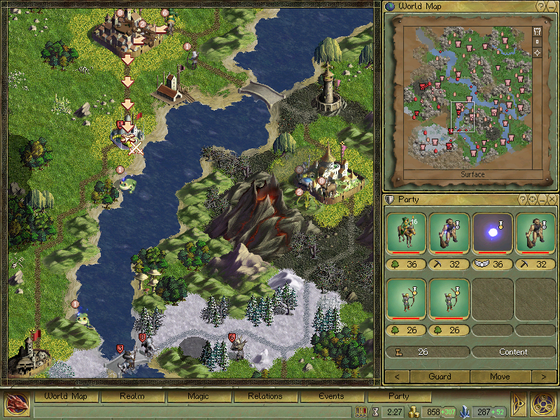
I tossed up whether I actually put this game in this list. In general I'm not really a fan of 4X strategy games, finding them too complicated at first and difficult to learn. But there was something about the atmosphere and music of this game that drew me in. And once I learned it, the game was actually quite fun and rewarding, if time-consuming!
Age of Wonders is often compared to Master of Magic or Heroes of Might and Magic, and at a glance it's quite similar. Players control a race from a set of Tolkein-esque races, and a hero, and typically try to conquer the land against the other players. Like most games of this ilk, you must manage your economy by conquering towns and gathering resources, whilst exploring the land and battling other players or computer-controlled enemies.
I'm a sucker for atmosphere, and Age of Wonders has it in spades. The art-style could be compared to Diablo's style, albeit with less shadows but more detail and colour. Each unit had a beautiful hand-drawn representation and description that showed in a separate panel. The music was amazing, with epic sweeping orchestral arrangements (though you can tell they were midi instruments and not recorded live.
The game itself was pretty fun, but the interface could've been better. It was also incredibly time-consuming! One issue I have with these games is that a lot of time is spent doing "grindy" tasks, like moving units or queueing up unit-production. Also, despite owning them, I've not played much of the sequels. Still, it holds a special place in my heart, and hence a place in this list.
Grand Theft Auto
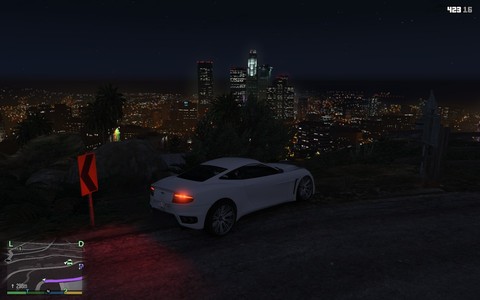
Again, another modern masterpiece. The Grand Theft Auto series is one of the pioneers of video-gaming, pushing the boundaries of gameplay, graphics and even moral standing. Being the pioneer of bringing violent, hedonistic fantasies to life, it might seem to someone foreign to gaming that the game simply rides on the coattails of its infamy. Any press is good press, right? But those who have played the game (counting in the millions) know that it is an absolute masterpiece in more ways than one.
I've followed the series since the beginning. I remember first playing a demo of the very first game and being absolutely blown away by the freedom presented. You could steal ANY car you wanted, and go almost anywhere on this huge map. There seemed to be no limits as to what you could do. Being an incredibly violent game, and my mother being a concerned conservative mother, my access to the game was limited, spoken about in revered, hushed tones in the school playground.
The second game seemed to improve on the first game in every way. More areas, more cars, radio stations, missions, storyline and even a live-action cutscene at the beginning! My brothers and I managed to grab a timed demo of this, and played the crap out of it when our parents weren't watching. Years later my friends and I would discover the amazingly fun multiplayer mode, evidence of the timeless quality of this game.
When the third game came out, we didn't have a console or computer good enough to play it, or money to actually buy the game, which are parents would never do for us. Luckily we had a friend come over and install a cracked copy of it on our computer with a 16mb graphics card. At 12 years old the irony of playing a stolen version of a game with "Theft" in the title was not lost on us. The game ran, but at about 10fps at most times. We loved it. Rockstar Games had managed to raise the bar yet again.
Vice City seemed like a bit of a money-spinner at first. Billed as a new game, but with the old engine and a few new features. The graphics were improved, but this just mean that it ran at even fewer frames-per-second than the previous game! So I didn't play this game for a few years until we upgraded the computer, and after a few minutes I fell in love with it. The main character, Tommy Vercetti, was an actual character! With dialogue and everything! And Vice City was absolutely beautiful. Seemingly constantly drenched in neon pink and blue, the setting seemed to be made for the corrupt, hedonistic style of gameplay that pervades GTA. Stylistically, Vice City remains my favourite of the series.
For whatever reason, I never fully played San Andreas. From what I hear it was quite revolutionary for its time, but something about the setting never grabbed me. I also never played GTA:IV, though that was mostly due to technical limitations of my hardware.
Only recently did I play GTA:V, thanks to the fortunate coincision of owning a decent gaming computer and the game being on sale on Steam. Coming from Vice City, the game totally blew my mind. I typically don't focus too much on graphics when analysing a game, but GTA:V felt ALIVE. The world was absolutely huge, and yet no detail was left out. The roads FELT like roads; highways had brown dirt strewn on it from connecting dirt pathways, and had flat areas worn down by millions of tyres, reflecting the sun exactly the way you'd expect them to. The sprawling city looks bustling by day and spectacular by night. The pedestrians walk with a purpose, sometimes having a conversation on their cellphones about something typically hilarious. Grafitti looks and feels real in a way that's difficult to describe without playing the game. Water feels exactly like water should, and not some sort of glitchy physics trickery. The music is astoundingly well picked, and has some original tracks from well-known artists. The storyline is so well-written: clever, raunchy, disturbing, funny, and yet poignant, like a perfect satire should be. The characters are incredibly well-fleshed out, at once characature and yet somehow believable. There is an incredible balance of realism and "gaminess" that seems to be struck at just the right point. There's just so much stuff in this game that it seems impossible for one person to find everything. It seems so hard to imagine how Rockstar Games, or indeed anyone, could outdo this game. It's an absolute masterpiece, a statement of gaming as a medium and a work of art.
Dota 2
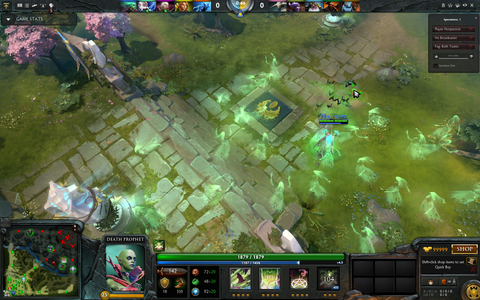
This game feels a bit different from the rest, in that I've not enjoyed actually playing this game as much as the others. It earned its placement on this list from more of an appreciation standpoint.
The original game was a custom-map for Warcraft 3. As became tradition with Blizzard RTSes, that game came with a toolset and capability to essentially mod the game, similar to games like Half-Life. Much like Counter-Strike, Dota spread quickly amongst the Blizzard fanbase, soon establishing itself as the number one custom map in the community.
The game itself was quite different to vanilla Warcraft 3, and would establish a formula that would go on to be implemented in various forms, including in League of Legends, the most-played online game of all time. Instead of controlling a team of units, you pick a hero from a roster over 100, and only control that one hero. You play on two teams of 5 players each, starting on opposite corners of a map. You then build up your hero by gaining gold and experience points, typically obtained through killing enemy creeps and heroes. Each hero has their own abilities, with their own strengths and weakness, that you aim to synergise with your opponents. Gold lets you buy items, which confer a ton of different abilities. Whichever team overpowers destroys the opposing team's Ancient, wins the game.
Like a lot of people, I was introduced to the original Dota through word-of-mouth. A friend at uni told me about it, and it sounded amazing. It sounded deep, unique and a lot of fun. Real-time team-play strategy, without the ridiculous micromanaging of hundreds of units so prevalent in typical RTS games? Yes please! I didn't own Warcraft 3 at the time, so I spent some of my hard-earned dollars on a copy, downloaded the map and tried it out...and was completely lost. I had no idea what each hero did, and the items were mind-bogglingly complicated. How was I to have any idea what items to get? The more powerful items needed to be made from combinations of lower-level items: how was I supposed to know how to find them? What the hell is a void stone? Why can't I find it in any of these shops? Wait...is that a shop hidden in the trees? Why the hell would you hide a shop in the trees!!! What the hell is going on in this team fight! There are so many sounds and colours?! And where's my hero? Oh, he's dead. Great.
The difficulty curve was far too enormous for me to overcome. It wasn't until a few years later that a friend patiently guided me through some games against bots. Like most players, I picked just one hero and practised the same build over and over again. I was starting to get the basics, but when we played in an internet cafe with real people I felt totally out of my depth again. I knew the game looked and seemed amazing, but I just couldn't get a grip of the game system to fully appreciate it.
Years later that same friend gifted me a copy of the Dota 2 beta, and I immediately felt much more comfortable. I didn't have to learn a different set of spell hotkeys for each hero! And there was no way you could accidentally "select nothing" so your right-click commands did nothing. Although the new graphics were comparatively stunning, what was most welcoming about the visual overhaul was the much-improved interface and the clarity of spells and characters. Finally I could at least attempt to see what was happening in a teamfight without losing track of my hero! With this new overhaul of dota I felt like I could attempt to understand the game a bit better.
Over the course of about a year or so I gradually understood the game more and more, becoming competent with more heroes and generally gaining an appreciation of the game. It's a game that involves deep knowledge of intricate systems, and cooperation amongst teammates. There's a lot of stuff to keep track of. Even though it was pretty far removed from a typical RTS, there were still elements of micromanagement, and you had to keep an eye on the minimap to stay cognisant of what was going on. It can be absolutely thrilling in parts, but can also easily upset or frustrate you. At times it seems like a strange mish-mash of game design. What seems like a bug (e.g. creep-stacking) is actually seen as a core feature, and any changes to these will undoubtably draw backlash from the community.
Dota 2's community is quite big, and like any community is a bit of a mixed bag. On the one hand, the community itself is the reason it has survived and evolved to the form it's currently in. It's clear that Valve's intention is to cater directly to this community, and it has done a fantastic job. On the other hand, public games involve playing a team-based game with anonymous strangers. It's a game that requires cooperation from all players, and one player can ruin the game for a team. It's also a game that has a lot to learn - knowledge is as powerful as skill in this game. As such, teammates are commonly toxic to one another. Being on the receiving end of abuse only spurs you to abuse other players in-game that aren't performing well. It's rather off-putting, and although reporting systems and muting has some effect, it still leaves a bad taste in the mouth.
Still, it's quite an amazing experience, and can easily provide hours of entertainment, but I feel like I've taken it to as far as I want it to go. I don't overly enjoy playing it, but I appreciate the game as a whole, and continue to read about the rule and hero changes as the game evolves.
Moonbase Commander

Moonbase Commander is sadly the most underappreciated game I've ever played. It's also one of the most unique turn-based strategy games I've ever played. It's surprisingly deep and a huge amount of fun.
I found this game whilst browsing the Home of the Underdogs website, a site dedicated to underpreciated abandonware games. I played a demo of it, immediately loved it and bought a copy from ebay.
Moonbase Commander is quite unique, but I guess it can be considered as a mashup between Worms and Starcraft, although it's still totally different from either of those games. It's played top-down, like most strategy games, on a map that wraps around top-to-bottom and left-to-right. You start off with a hub and a starting supply of energy. Each turn you get to "shoot" something from one of your hubs. There are 18 things you can shoot, and each thing takes 1, 3, or 7 energy to shoot. They range from simple explosing projectiles, to other hubs that you can use to shoot things from, to scouting balloons or towers, to viruses for infecting other players, to energy hubs that harvest energy from energy pools around the map. Shooting a thing involves picking a hub to shoot from, aiming in a direction and then using a worms-style meter to assign power to the shot. If you shoot out a building of any kind, it'll be connected to your original hub by a tether of sorts. This tether cannot cross over another tether or go through water hazards. Also, any building that were shot from a hub will be destroyed if that hub gets destroyed. As the game progresses you'll have a chain of hubs spidered across the map, and you'll be trying your best to scout your opponent to find their most vulnerable spots. Players get eliminated when all their buildings get destroyed, which happens when your original hub is destroyed.
At first glance, Moonbase Commander seems like a childishly cartoonish game. This is an unfortunate side-effect of being produced by Humungous Games, a producer whose backlog consisted almost entirely of point-and-click adventure game series for children, such as the Putt-Putt and Pyjama Sam series. Many people consider this misplaced target market was one of the major reasons for its commercial failure and relative obscurity. Actually playing a couple of games reveals a suprising level of depth seemingly absent in most games today. The risk-reward tradeoff of economic buildings vs offensive weapons is immediately obvious, but soon more complex options become apparent. You learn to use 1-energy shots to test your projectory and power before firing a more expensive building, minimising the risk that your building lands on a ledge or in water, wasting a larger amount of energy. Cluster-bomb shots seem slightly useless at first (a bomb that splits into 3 bombs but each doing only 1 damage each, compared to 3 damage from a single bomb), but their utility becomes apparent as they can disable 3 anti-air defense systems at once. Scouting the enemy before they see you is a huge advantage, allowing you to fire a sneaky shot through the shadows, or to creep around them to find their primary hub, firing at it before they get a chance to retaliate. Every game, win or loss, is deeply satisfying in a way that seems more familiar in strategic board-games than most video games.
The story of Moonbase Commander's development is somewhat bittersweet; a tale of one man's passion to prove to others and to himself that he could complete a project he believed in. It's also a story of his battle with a company too entrenched in its old ways, too focussed on money and numbers and with little understanding or appreciation of the medium. As such, the game was soon delegated as a cult classic - known and loved by a relatively small amount of people. That said, the game has experienced a minor resurgence in recent times, being made available on gog.com and Steam. It still runs well on modern systems, and almost perfectly under WINE on Linux and Mac systems. Whilst the game included LAN multiplayer, online play is only possible using fan-made third-party programs. One of these, Moonbase Console, also allows for random-map generation, which is arguably essential for balanced multiplayer games. In an effort to keep the game future-proof, I contacted the original creator of Moonbase Console to ask for the source-code, and he happily gave it to me to put up on Github. There are also a few minor tweaks and fixes that I'd love to see if there was a chance of a new version being made, but although the IP is currently held by Rebellion Developments this seems unlikely. Still, it's nice to see that the game is still reasonably playable today, and all that's needed is one other player to enjoy this game to its fullest.